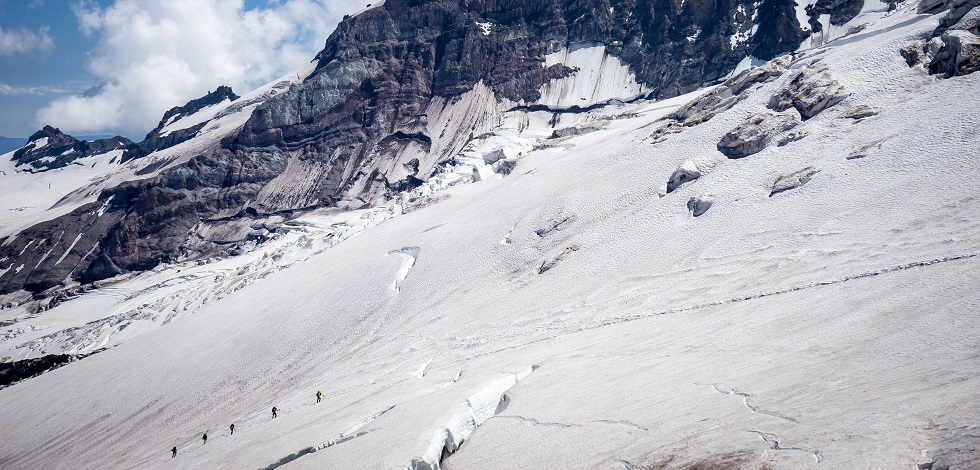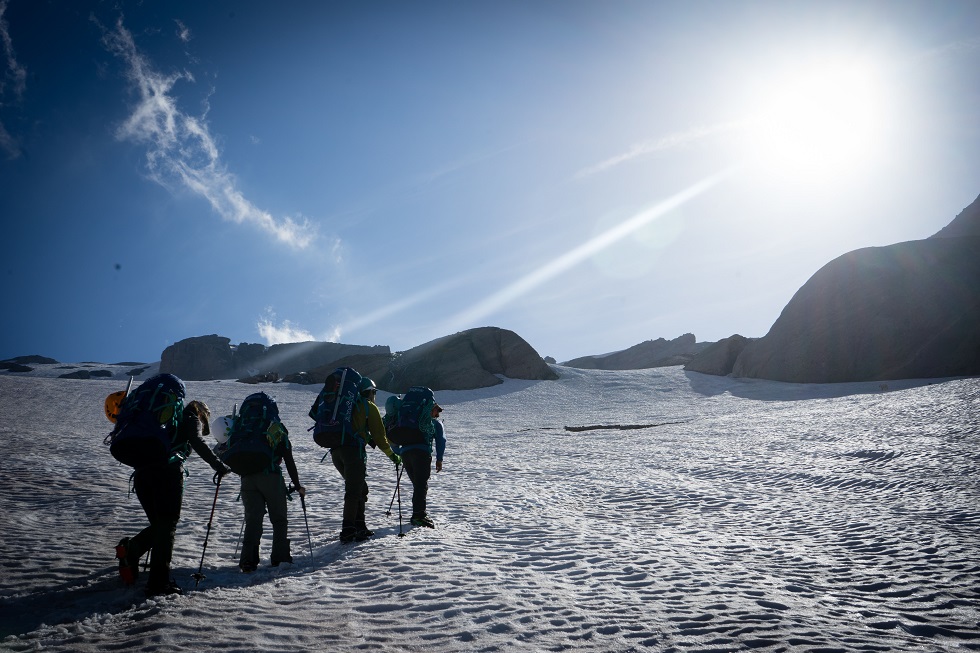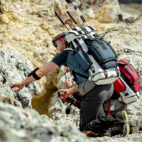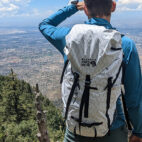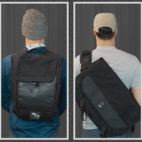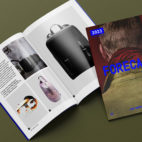Journey Along for the JanSport Mount Rainier Climb
There is a magical moment when you say “yes” to an assignment that takes you somewhere out of your comfort zone. I love it and embrace that looming feeling that you are not now, nor will you ever be fully prepared for what you are getting yourself into. Being invited on the JanSport Mount Rainier climb fully encapsulated that feeling, compressing it into a nugget of anxiety that I held inside of myself. It can be the same feeling you have when you drink too much coffee, and that feeling rose to the surface in direct correlation with the encroaching start date of the trip. Fortunately for me, I was allowed another Carryologist along for the journey, my partner Emily.
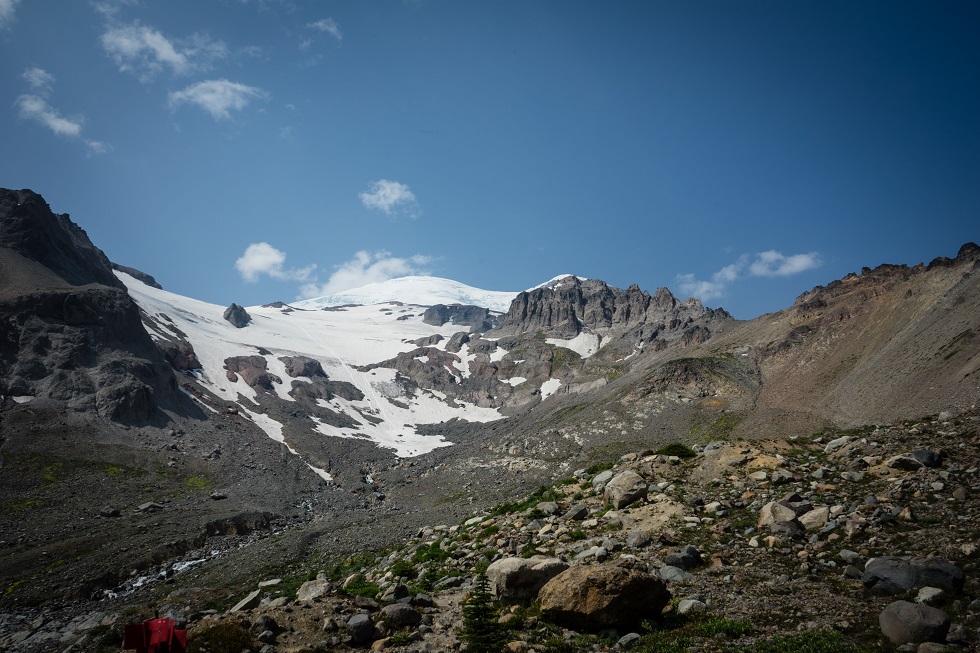
The reason for the anxiety came directly from the knowledge that we hadn’t done anything other than ride mountain bikes for the last 18 months. Walking on snow at altitude with ropes, ice axes, crampons? We were certainly out of our comfort zone. Aside from general on-bike fitness, we were fish out of water – or mountain bikers on ice. I can see the musical now.
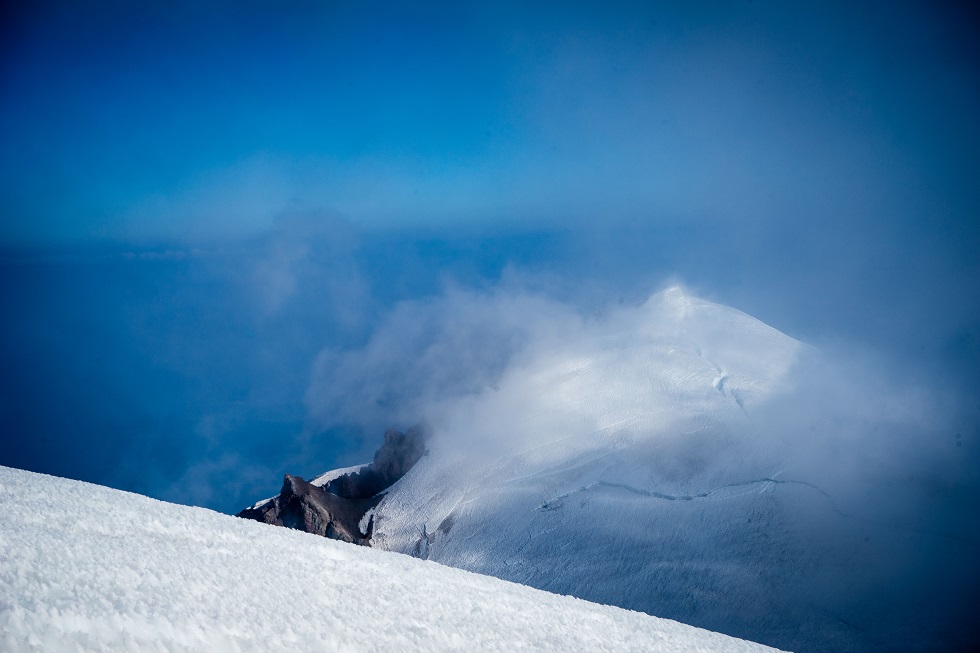
The Gear
JanSport has deep roots in the mountaineering community, and has worked with International Mountain Guides (IMG) forever and a day. Through many, many, many iterations their Tahoma Guide Series pack is truly a thing of beauty. Cut from strong, reinforced sail-cloth type material, the Tahoma has only what it needs to take a person to the summit of a mountain and back with nothing extraneous. The Tahoma comes in 75-liter and 45-liter models. We were issued the 75L, and happy for it – bulky layers, tons of food, a camera and four-season tents easily filled the cavernous bag to the gills. At the trailhead, we all sat on the packs to displace the air from our voluminous sleeping bags – sardining in last-minute items was akin to fishing something from a pocket on your too-tight pair of jeans.
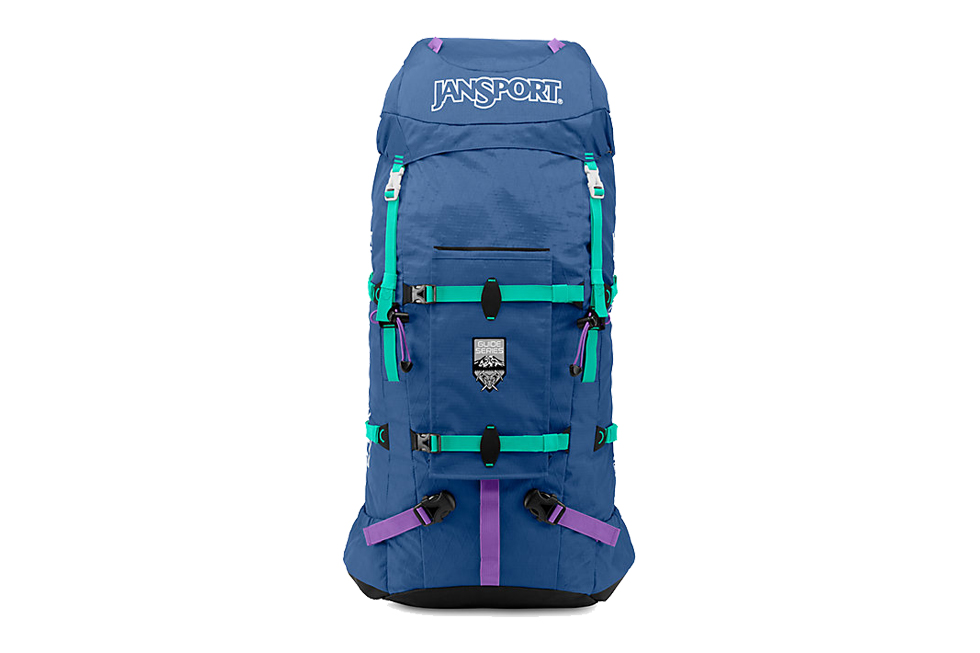
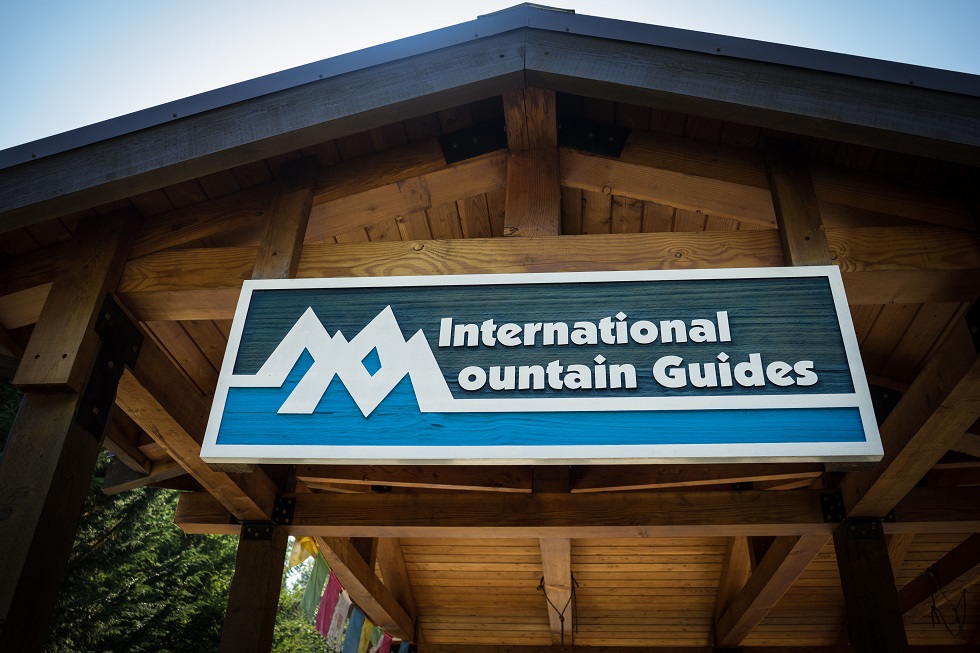
As mentioned, the pack was pared down, but not without flourishes that filed it solidly into the “expedition worthy” category: Hypalon-reinforced crampon pockets; two options of waist belt (one thinner for wearing with layers, the other thicker and best paired with summer-weight clothing). The lower side-pockets might seem like a misstep on this bag, but rather than water bottles they are intended to host wands – pickets used for identifying a route through otherwise nondescript snowfields littered with crevasses, sometimes in snowstorms. There are a couple of great reasons for not carrying a water bottle on the outside of a mountaineering bag: 1. If you drop a water bottle on steep snow, it will rocket downhill, never to be seen again. 2. If it is cold outside, your bottle will freeze, and you will no longer have water to drink, just a frozen rock of regret that you will begrudgingly and forlornly carry with you back to your tent. Success can be measured in fluid ounces of water.
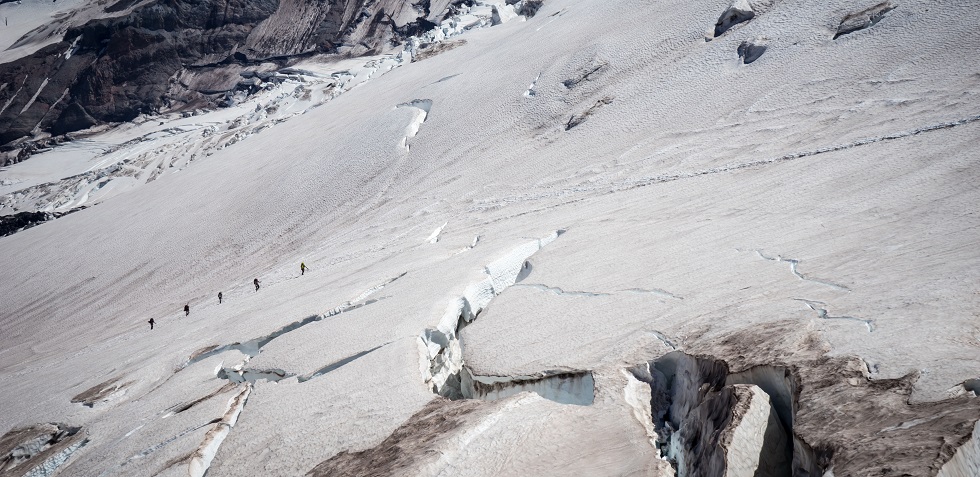
The pack used the “GridFit” system for adjusting the shoulder straps to accommodate a wide variety of user shapes and torso sizes. I found the system to be intuitive and easy to make on-trail changes to, but worried that it would be a failure point on the pack itself. With only this trip, I didn’t have a real gauge on the long-term durability of the product. One beef: The NASCAR-esque branding was far too much for my liking.
“There are a couple of great reasons for not carrying a water bottle on the outside of a mountaineering bag: 1. If you drop a water bottle on steep snow, it will rocket downhill, never to be seen again. 2. If it is cold outside, your bottle will freeze, and you will no longer have water to drink…“
The Ascent
Our training, aside from riding bikes, amounted to watching “Mount Rainier Volcano is A Ticking Time Bomb” on YouTube to get clues about whether or not we’d be able to tell if we might die from pyroclastic atomization in the mountain’s imminent eruption, and to generally bring the overall intensity of our next few days up a notch. It worked.
Arriving at IMG’s Ashford base camp we hung around organizing our gear and getting to know the other members of our group. Each member of the group is affiliated with JanSport in different ways, from marketing gurus, to bloggers, to factory store employees and warehouse managers – everyone came with a shared investment in JanSport and high expectations for an incredible adventure. Participants on the trip came from as far away as Japan, Dubai, Argentina and Panama.
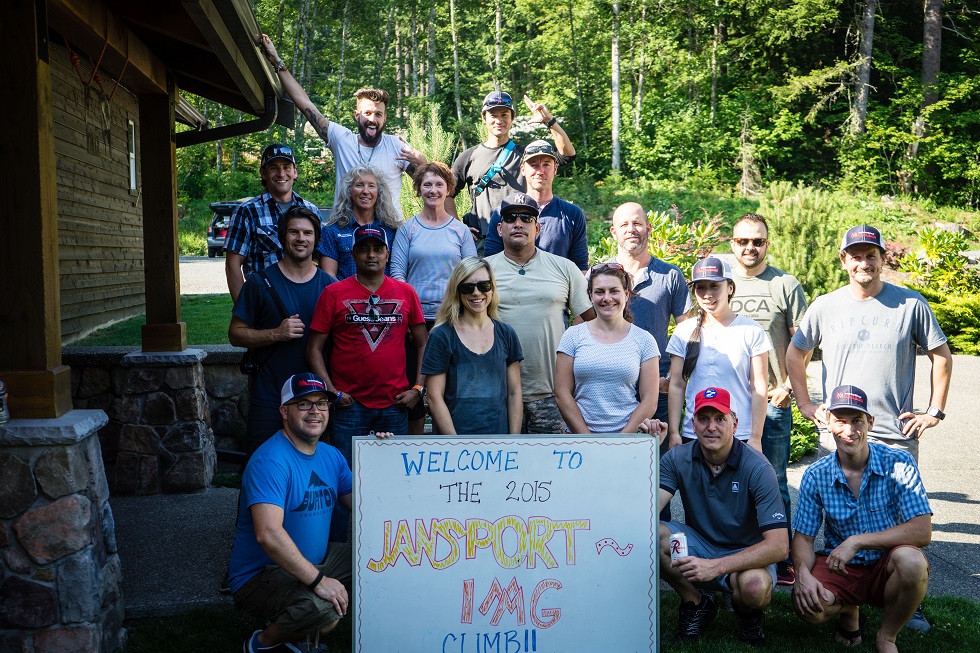
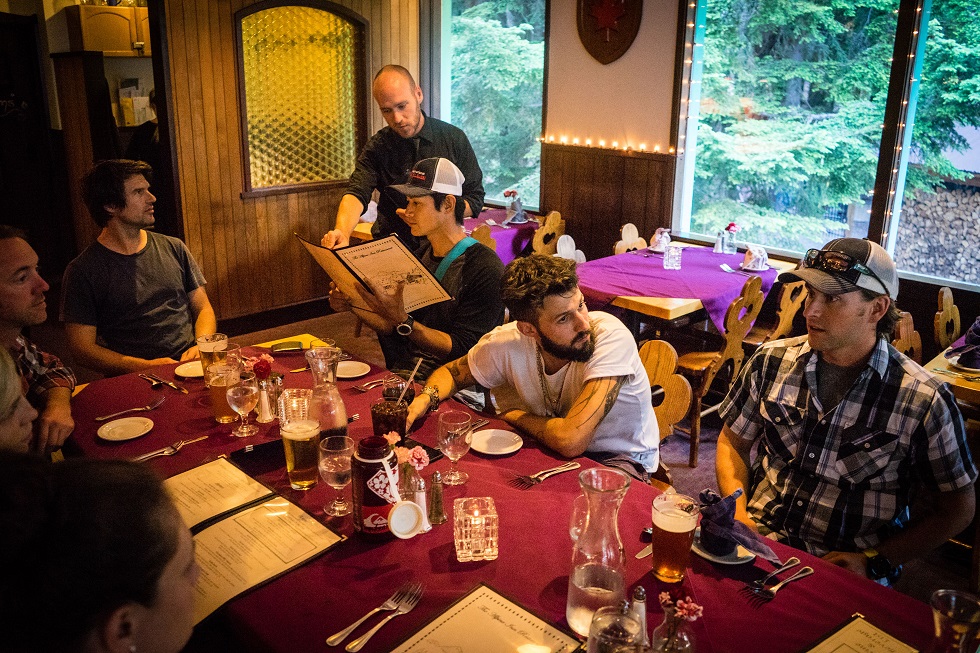
The group of 16 people split into two. One group headed for the Disappointment Cleaver and the other, our group, up the Emmons Glacier – the longer and more remote route to the summit. Our guides included Josh McDowell, Kim Haft, Jon Schrock and Chris Meder. Each guide was eventually assigned three climbers so we didn’t wander to our death in a crevasse. All of them ran a tight ship, and in perfect synchronicity moved us efficiently and effortlessly toward the mountain’s summit. Unloading from the van at the White River Campground parking lot, our group did final gear checks and distributed food.
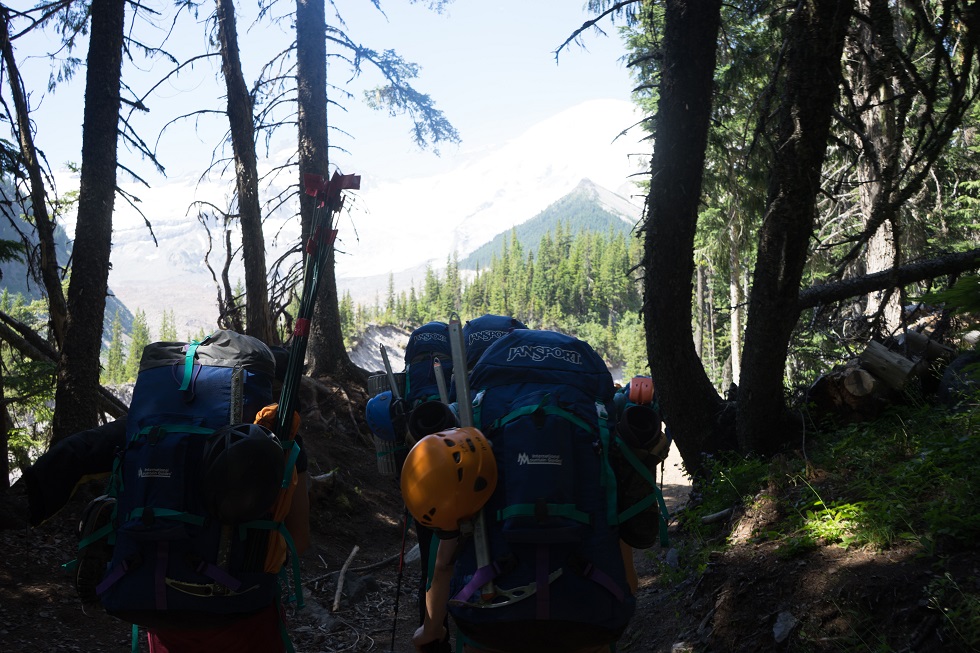
Despite 35+ lb. packs the first few hours were a delightful start to what would otherwise be a grueling trip. The trail from the parking lot is a well trodden, meandering dirt path that climbs gradually and winds through classic Northwest pine forests and up into the low alpine meadows. We walked at a casual pace getting to know each other, trading stories about our past backcountry experiences (or lack thereof) and our affiliation with JanSport.
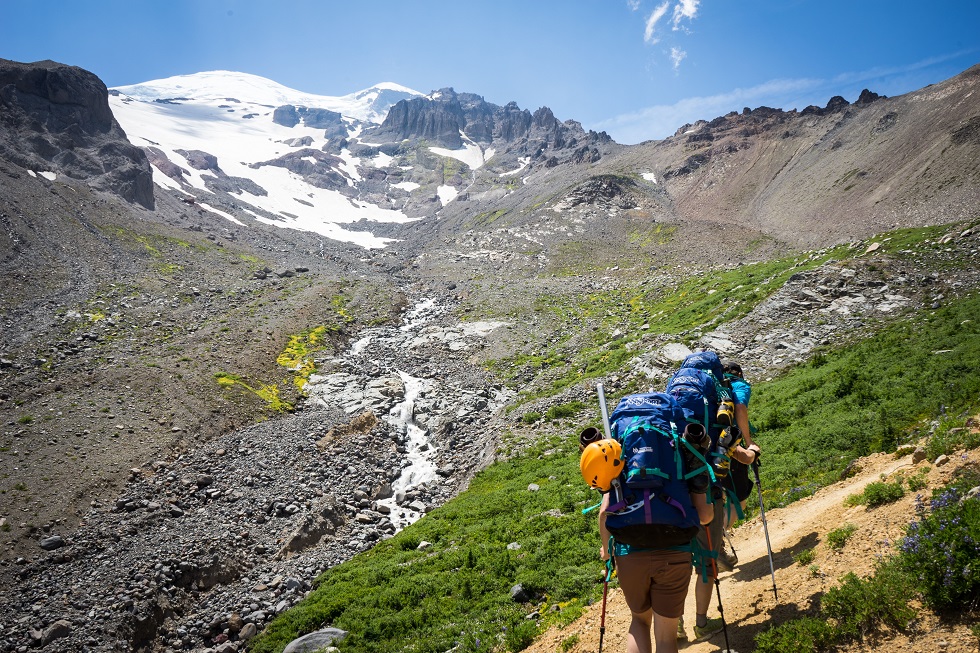
After a break for lunch, we noticed that we were the only hikers continuing on, while the day-trippers with toddlers and granola-crunching retiree bird-watchers headed back to the trailhead. The trail quickly changed character, becoming looser, steeper and narrow as we climbed up a sharp ridge. Before us lay our goal; a rounded-top pinnacle of rock and ice some 11,000 feet above us, but perhaps only three miles as the crow flies. At this moment, some discovered there would be no summit for them – and the measure of a mountain is nothing compared to its stark reality. Just beyond us lay the Inter Glacier snowfield. While we relaxed, the guides explained the basics of snow travel; how to put on and wear crampons (and not kick yourself), how to carry an ice axe and ultimately, how to use it in case of emergency.
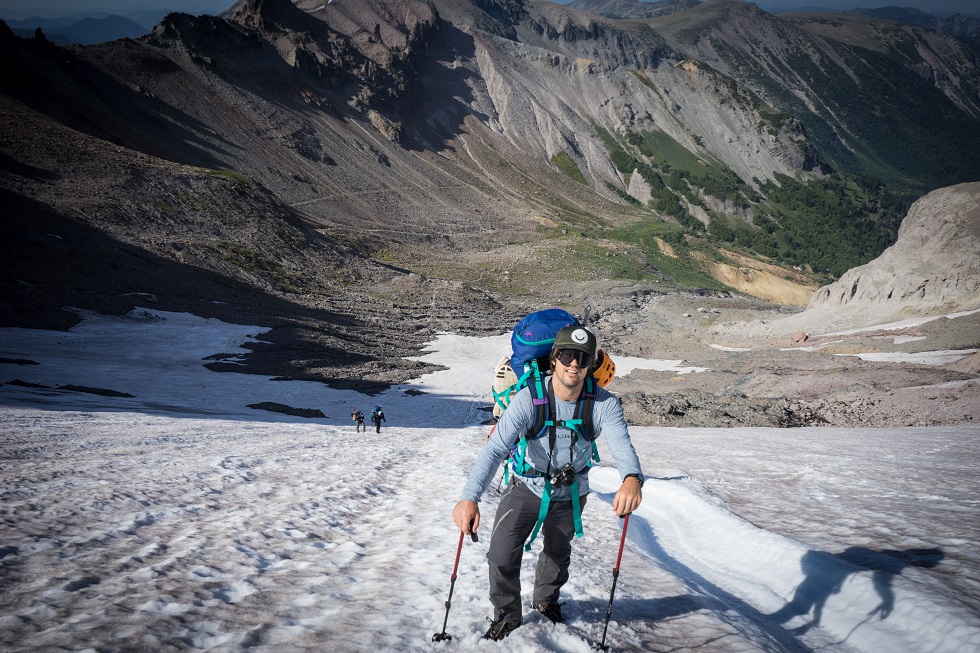
While most of our group had been backpacking before, and some had been mountaineering, we all felt our stomachs sink with trepidation as we realized we’d be spending the next two and a half days walking, cooking, and sleeping on nothing but snow and ice. With much fumbling, we slowly made our way up to a rocky outcrop at the top of the snowfield at about 7,600 ft, our camp for the night. As the sun set in the valley below us, we contemplated how beautiful, yet how challenging the landscape we’d inhabited for barely 14 hours was.
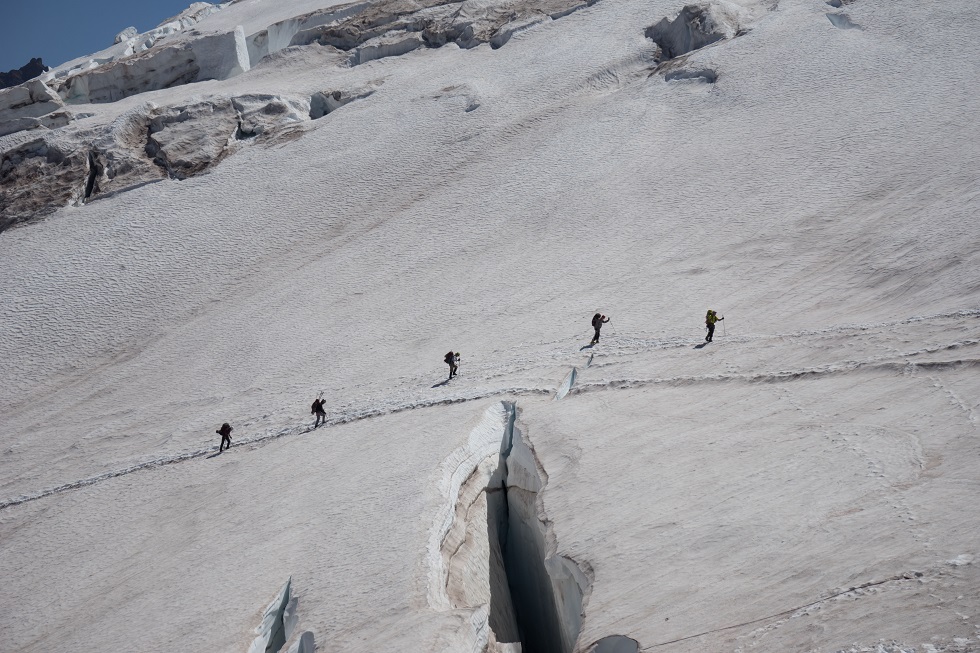
“While most of our group had been backpacking before, and some had been mountaineering, we all felt our stomachs sink a bit and gulped back trepidation as we realized we’d be spending the next two and a half days walking, cooking, and sleeping on nothing but snow and ice.“
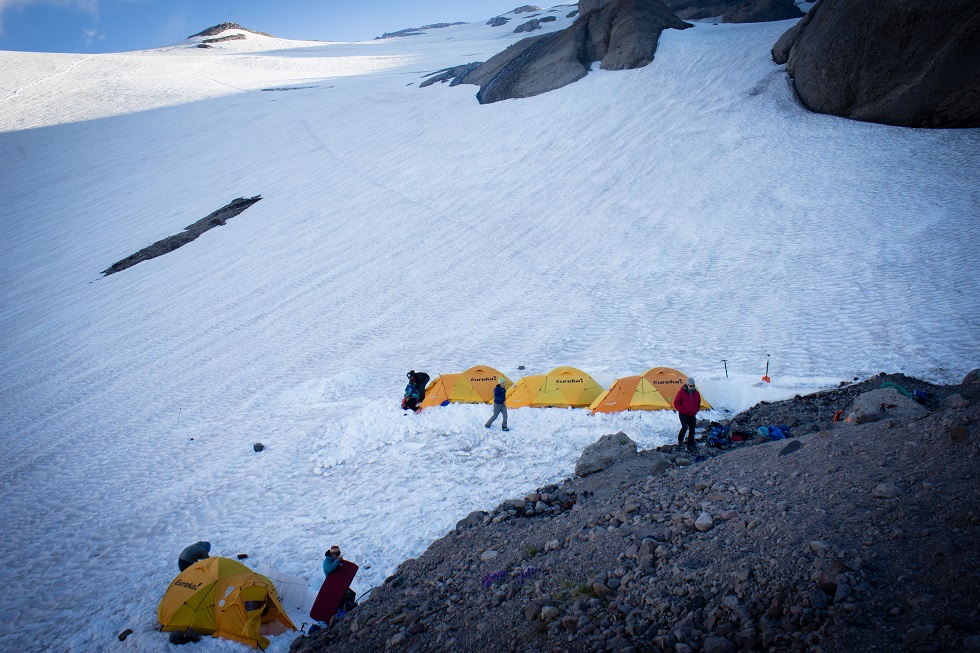
We awoke with anticipation, understanding the lack of experience and knowledge we’d felt yesterday was about to pale in comparison to today. Once we left camp this morning, all travel would be roped together in groups of three or four until getting back to this spot in two days. Being ‘roped up’ requires a rhythm and awareness. Each member of the group wears a harness, which is tied to a length of rope. Separated by about 50 ft., each person must walk at a pace and position such that the rope doesn’t pull or sag too much, or get caught under their feet at any time. Failing to do so will result in tripping and falling, bringing yourself and the group down with you as you careen down a steep, icy slope for thousands of feet.
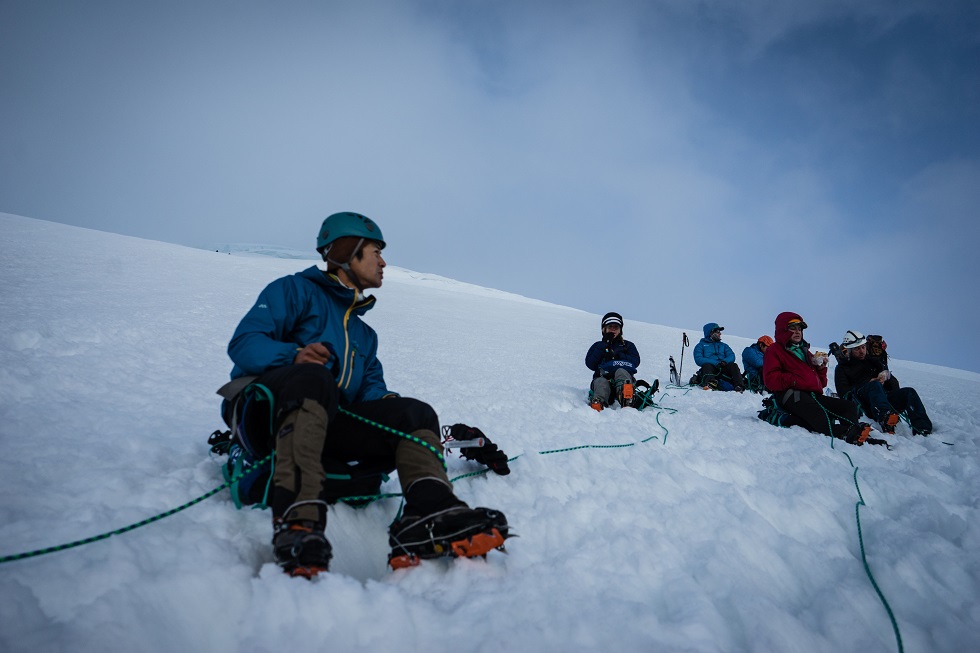
It took all morning to climb up to Camp Schurman at 9,600 ft. Arriving at our new digs for the evening we were grateful to find a pit toilet that perhaps was the most evil place on earth, and a spot of cell service, despite being spotty at best. Alas, this was wilderness, and we braved it like champions. Please note sarcasm.
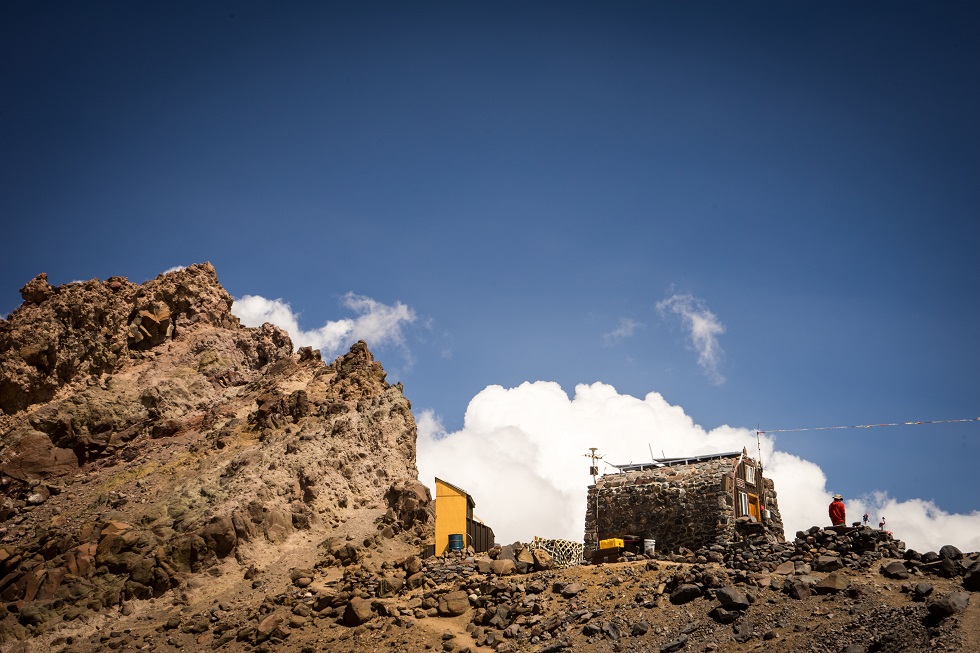
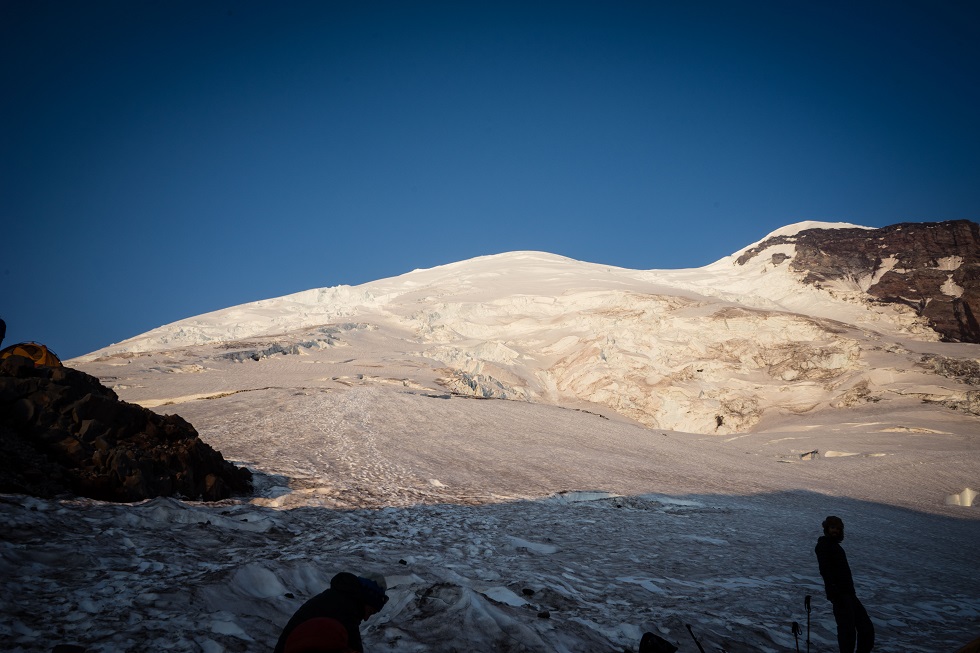
After an early night, we were woken at 11pm to the smell of bacon and eggs as the guides served up breakfast bagels and coffee. Despite little sleep and visible tiredness in our eyes, our bodies and minds were convinced that it was morning and time to begin the day’s mission – summiting Mt. Rainier. To date, we’d hiked a few hours on snow, but had yet to come across much in the way of crevasses or route finding. Walking up a steep icy slope in a rope team with crampons is as worrying as it seems. Doing that at 11pm with only a headlamp to guide your way sounds as if it’d be worse, but it’s actually easy to convince yourself that what you can’t see can’t hurt you. Little by little, we kicked the teeth of our crampons into the icy slope at the beginning of our trek, relying only on the feeling of grip beneath our feet to instill confidence in each step. As if in a dream, we traversed up the mountain, blind to the path ahead and our surroundings with only the whispers of the other climbers in our group and feeling the warmth of lower altitude diminishing. We spent hours taking step after step in near complete silence, catching glimpses of deep shadowy crevasses just beyond the reach of our lights.
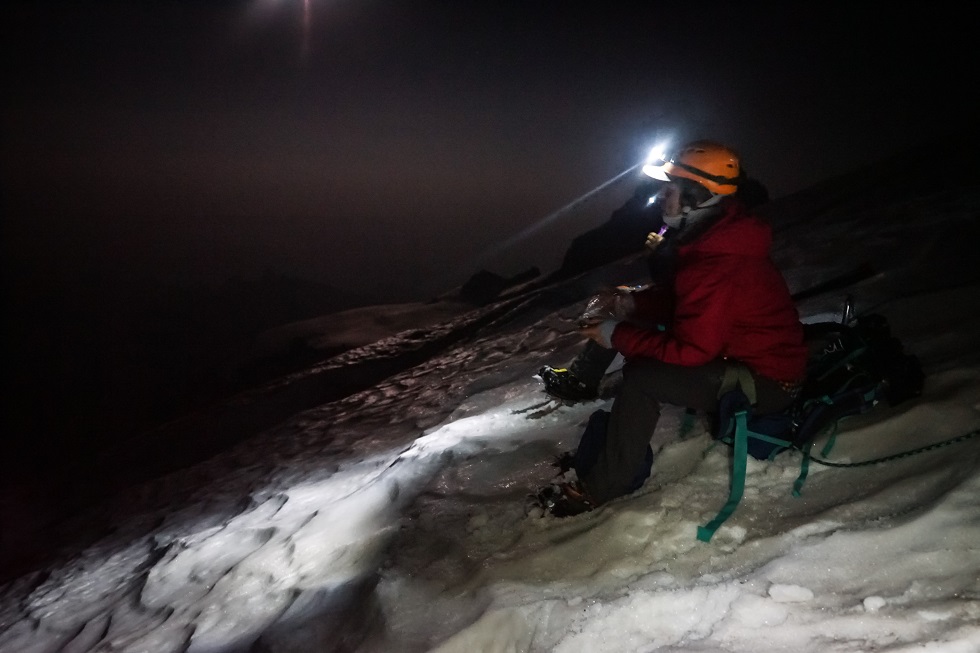
With the sun finally out our route was long, exposed and technical as we picked our way over and around numerous crevasses that tore open the mountain, perpendicular to our path. While some have described climbing Mt. Rainier as simply walking uphill slowly, our summit bid required us to walk along a spine like a tight rope, to jump (not leap – “this is more controlled” cautioned our guides) across the edge of expanding crevasses and to step down, then belly flop onto the other side of a crevasse like we were climbing out a swimming pool that’s 400 feet deep and doesn’t have water in it.
“Being ‘roped up’ requires a rhythm and awareness. Each member of the group wears a harness, which is tied to a length of rope. Separated by about 50 ft., each person must walk at a pace and position such that the rope doesn’t pull or sag too much, or get caught under their feet at any time. Failing to do so will result in tripping and falling, bringing yourself and the group down with you as you careen down a steep, icy slope for thousands of feet.“
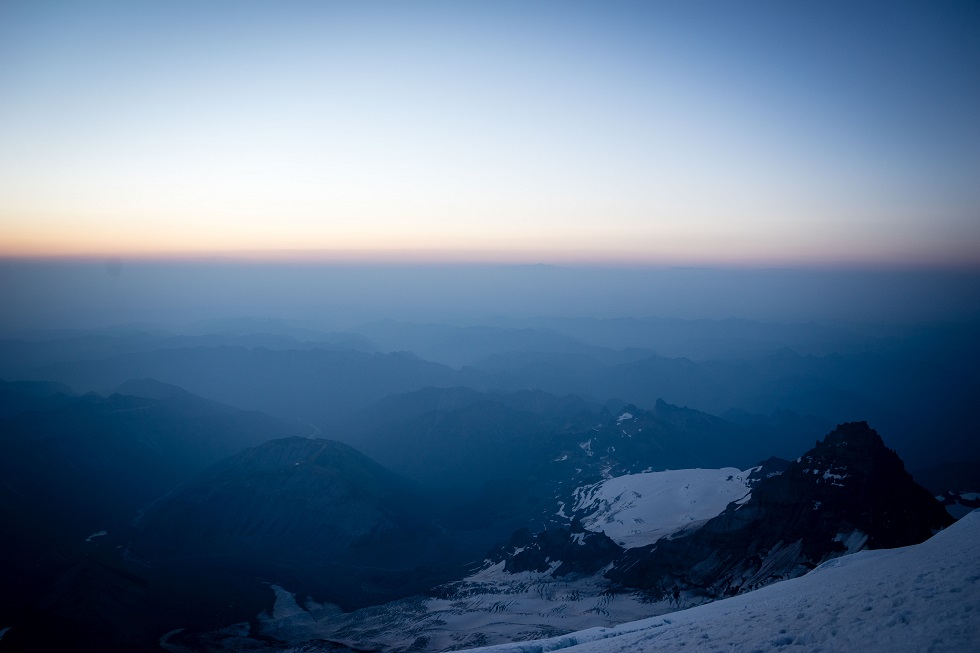
Mt. Rainier’s summit sneaks up on you. The summit’s rocky cap feels out of place and disorienting at first contrasting with the vast sea of white around you, but anchors one to their success, knowing it is comfortably within reach. At 14,400 ft. one doesn’t celebrate the same way they might at sea level; there’s no popping of champagne, there’s no dancing or shouting. The relative inability to breathe and discomfort at being at this elevation keeps celebrations short and sweet, internal and emotional, but not without fun.
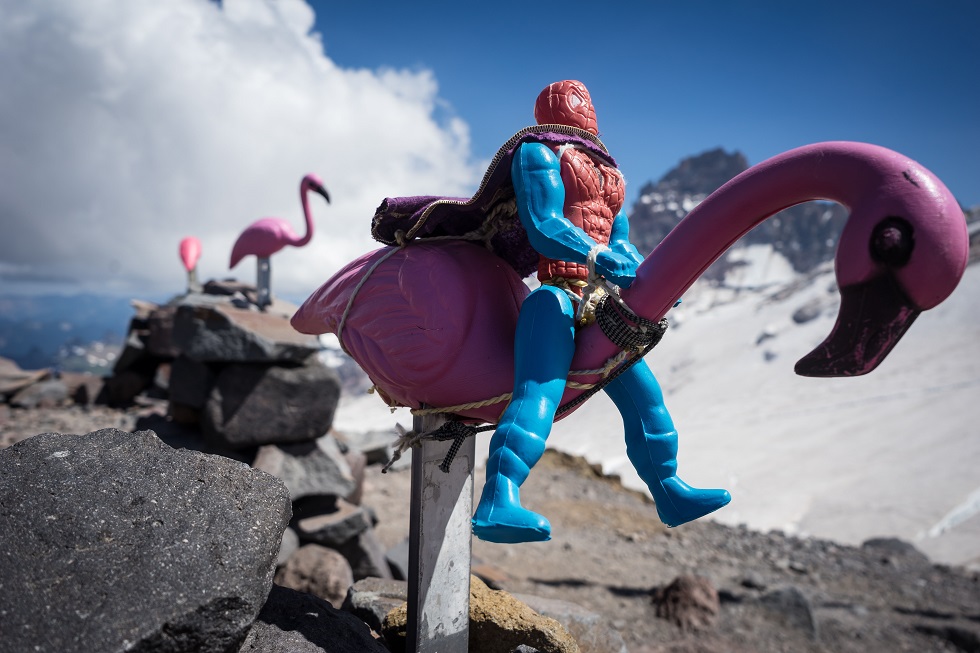
“The relative inability to breathe and discomfort at being at this elevation keeps celebrations short and sweet, internal and emotional, but not without fun.“
After many photos we departed the summit, retracing our route. Down is easier than going up, right? Wrong. The route we’d climbed up was no longer a viable path to descend. The warmth of the sun broke open new crevasses, and widened existing ones. Our route became even more circuitous as crevasses grew larger and walls that were only a few feet apart hours before were now wide enough to drive a bus through. Surpassing 12 hours of hiking for the day, we all realized that while we’d succeeded at reaching the summit, we had yet to accomplish our ultimate task of returning home safely. Around this time one member of our group from Japan disappeared into the snow, silently swallowed by the mountain. Fortuitously, he was roped to a group of climbers. The ice bridge we all crossed gave way and the black hole into which he fell pulled the air from all of our collective lungs. His feet pedaled for a moment in the inky blackness before he managed to extract himself.
“Surpassing 12 hours of hiking for the day, we all realized that while we’d succeeded at reaching the summit, we had yet to accomplish our ultimate task of returning home safely. Around this time one member of our group from Japan disappeared into the snow, silently swallowed by the mountain.“
Step after step after step, like Sisyphus in reverse, we slogged downhill. But with Camp Schurman in sight and despite our weary spirits and aching knees, our pace quickened and we all skidded, slid and plunged down the snowfield then immediately into our tents to sleep.
In leaving Mount Rainier I couldn’t help but feel like I understood JanSport better. I arrived for the trip thinking about their ubiquitous school bags, and an ever-widening distance to their mountaineering roots. In the technical packs realm, JanSport is a serious player. Despite not exactly falling in love with the “suffer-fest” elements of climbing big mountains, I did find myself way, way out of my comfort zone, but enthusiastic about the experience – lingering alone before walking out of our last camp, hoping to soak in just one more minute in the wild.
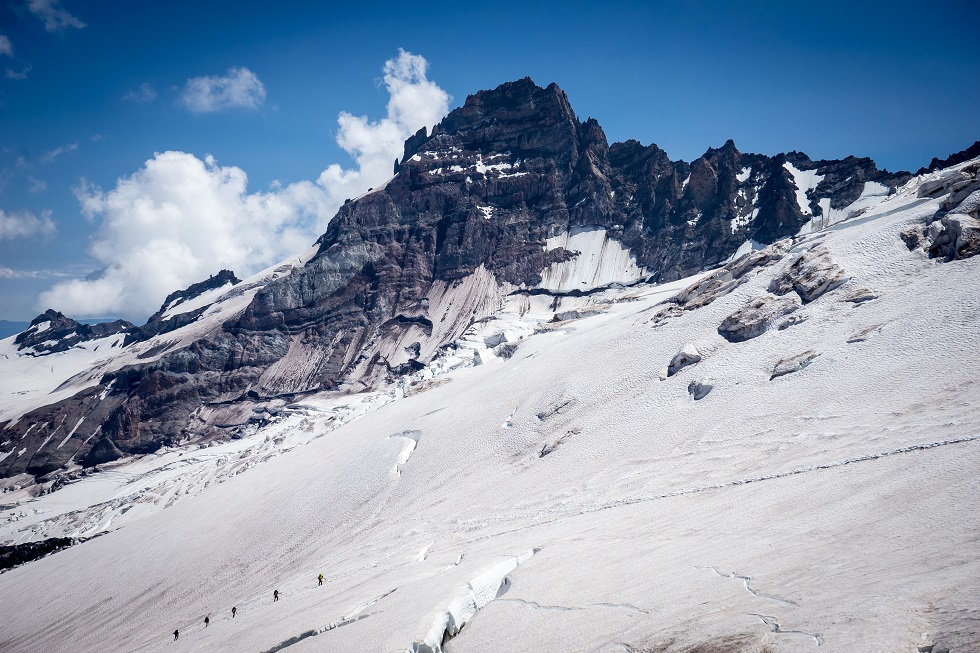





 Carry Awards
Carry Awards Insights
Insights Liking
Liking Projects
Projects Interviews
Interviews
